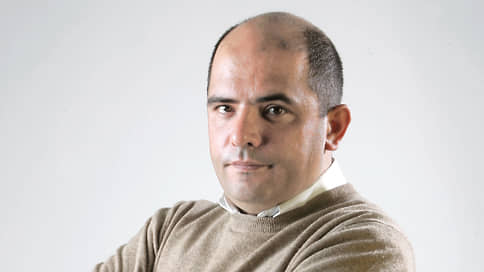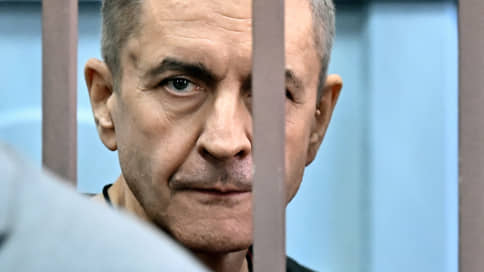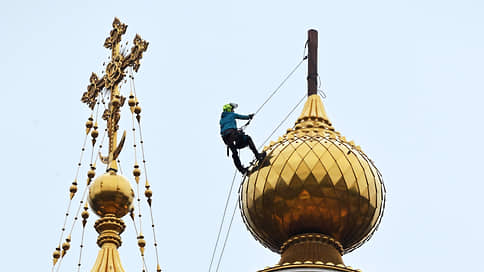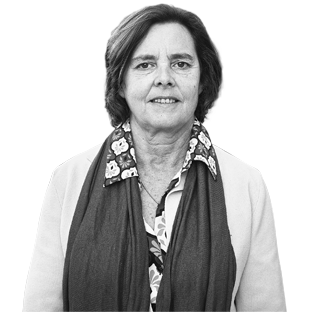Grigory Revzin about the heritage of Zurab Tsereteli

On April 22, at the age of 91, the President of the Academy of the Russian Federation Zurab Konstantinovich Tsereteli died. About him – Grigory Revzin.
Zurab Konstantinovich Tsereteli died. I think for everyone who knew him personally (and there are a lot of such), this news is terribly sad. He had been sick for a long time, it was clear here what to wait, but he was a member of a holiday, who loved to delight people very much. It was generally his main pleasure in life – to give joy and catch it back. And this ended.
It is probably necessary to say something about his work and the life path, thousands of sculptures, a mosaic and a major, tens of thousands of paintings. This, of course, should not be done now, but after the time when art historians are dealing with this heritage, but now it is also necessary. This is difficult not only because his heritage is dull. This is difficult because in life he made a choice that does not fit into convenient grades of grades.
It was a truly gifted artist. He had a phenomenal sense of color, he is primarily a painter. Color in painting is such a matter that is poorly translated into the language of words, approximately like a sound, it is very material and very emotional, and a sense of color is a sense of fullness of life, its acceptance, and in the painting of Zurab is a very joyful acceptance. In the picture, he rejoices, even, it seems, bursts with his hands, sometimes begins to mechanically hum.
He, as it seemed to me, has a very childish worldview, if you remember your childhood delight that everything around is so sonorous and interesting, and so much, then his painting is about this. But this is the perception of the world, when it is so bright and diverse, and the light is so fast and changeable, and this yellow, when the light has moved, it is completely beautiful, it is very difficult to somehow harmonize and streamline. Therefore, it seems to me that the children are running all the time in an attempt to somehow grab all this, and as a result it simply leaves with time. To make this brightness and severity of life harmonious, you need a certain emotional wisdom and temptation, the ability to control your childhood emotionality. This is skill. And Zurab, in my opinion, was an incredible level of a master.
He was a very educated artist. It is the artist – I am not sure that he read all countless writers, poets, philosophers, whom he painted or sculpted, he read, but his art education was wonderful. All Russian artists of his generation enthusiastically discovered the pre -war avant -garde, French and Russian, but opened according to rumors, according to albums and a small number of paintings in the expositions of museums.
Tsereteli in 1964 ended up in Paris, he studied from his hands with Picasso, Shagal, Leger, he was a charming young Georgian artist and won them humanly.
In any of his compositions (I’m talking about painting), a strongly set hand of the French school is felt. Among the critics of the old formation, when the fine art also suggested the use of canvas, brushes and colors, it was believed that the profession implies the ability in any picture to see a fragment where the artist succeeded, and only then scold everything else. The ceremony does not have to look for such fragments, he is everywhere at the level of granted skill.
Well, now he returned to the USSR after France. And made a choice. I don’t know what he thought at the same time. He was a balagur, he told any episodes of his life as a joke and with his eyes showed that he had to laugh, but at the same time he hid, or replaced his internal experiences. It is impossible to imagine ceremonies in a state of moral torment, this is somehow unnatural. Maybe there was no choice, it turned out somehow by itself. But from the outside it looks all with a choice.
When I first ended up in Barcelona and went to Guel Park the Great Antonio Gaudi, I was somewhat dumbfounded – a pure ceremony. But I must say, at that moment I treated the work of Cerethels very poorly, and to find in myself a negative attitude towards Gaudi was very good. And now you go through the park and see: benches – ceremonies, architecture – also, perhaps, ceremonies, walls with mosaics – well, a clean ceremonies, the devil knows what it is. If you do not believe, go first to Sochi, to the resort park, and then to Barcelona, you will have the feeling that this is generally the same park. Only Sochi, made in 1967, today is almost in ruins, so it seems the most distant, abandoned part of the Barcelona park.
There is probably a semantic difference. Gaudi was made by Guel Park from the heart. It was his soul, and so he materialized it. Tsereteli made the park from the heart of the party and the government, which wants to give the workers the joy of vacation.
His mosaics in the park in Pitsunda in Abkhazia, in the sanatorium of the Central Committee, are also made exactly. I don’t know if they are preserved. By the way, now that he died, it may still be worth thinking about the restoration of at least a park in Sochi, this is still a beautiful thing, somehow wildly that he is in this state. But the heart is on your heart, you cannot but understand what to distinguish, whose soul, artist or Central Committee of the CPSU here is difficult. In the Soviet 1960-1970s, the bright decorative joy that Tsereteli created on a large scale that in the resorts, in the USSR embassies in different countries, it was equally belonging to its creative temperament, that to the official creative temperament of Soviet diplomacy and the Central Committee.
But then it affected very visibly. Try to find the soul of the master in the ensemble of Russian fairy tales in Manezhnaya Square. No, I say seriously, the art is so arranged that this is important. Try to feel the artist here just as you can easily feel him in any of his pictures, even in a passing sketch. It’s wildly to look for an artist on Manezhnaya Square, he simply does not. If you can meet someone’s soul there, then only the ghost of Yuri Mikhailovich Luzhkov, walking from a bear to horses.
Tsereteli mastered another profession. He became the organizer of a large artistic production on state orders. And it cannot be said that he did not succeed in this, on the contrary, he was very successful. To recreate the decor of the Cathedral of Christ the Savior, and sculpture and murals, in a country where all institutions of art production were destroyed, where there are no sculptors, nor painters, nor traditions, nor materials, and in such terms, it is like starting a large metallurgical production from scratch. It was only then that China began to make the same casino in Macau with painting and sculpture, reproducing Venice of the 17th century, and in the late 1990s no one in the world was able to do such a thing (by the way, the Chinese graduates of the Academy of the Russian Federation, where Z. K. Tsereteli was the president). It is only pointless to look for the traces of the artist Tsereteli in the Cathedral of Christ the Savior. This is the owner of a big business, and the fact that he is drawing still lifes in the country – this is a hobby. He remained a very big artist, but this is for himself. For business, for relatives, for friends, for employees, for fellow countrymen, he became a decorator of the state.
He created a large business for the production of art products by order of the authorities, and now I do not want to talk about them – I am leaving this art criticism of the future. And he became the subject of universal hatred of the progressive public. The story with the monument to Peter the Great was a heat campaign, which then became familiar to us, but then everything was the first time. There was, it seems, not a single decent person who would allow himself not to say that this is a shame of Moscow. It was very strong, and it was very long, and it was very boorish. It is interesting, however, what happened next.
Zurab Tsereteli was a born genius of communication. He never studied this and never hired any political strategists, he simply was a very non -nozzle, generous and kind person and his hateers made his friends.
He gave Moscow a museum of contemporary art. He made all his critics to all his critics members of the Academy of Arts, more or less transforming this organization. He even offered me to submit documents to the academy, and although, from my point of view, it was already too much, I cannot but appreciate the gesture. My God, I mocked him like that, I ridiculed him like that, and he … very ashamed. Just the absurd breadth of the soul man.
And he defeated Hate. I do not know a single person who would succeed today, and in today’s realities, when we, it seems, only live by the fact that we hate each other, this is some kind of incredible case. I don’t know how much he had this individual, copyright, personal self -awareness that could be offended. Something generic, choral, and his countless sculptures-Akhmatova, Brodsky, Tsvetaeva, Vysotsky, Luzhkov, John Pavel II, Henri Rousseau, Nico Pirosmani, de Gaulle, Georgians, Jews, etc., are more than one company, all our guys who are all beautiful and everyone loves each other. And somehow he managed to do it around himself, something like this was so settled. Look at the obituary-few people who allow themselves to say that everything is not so unambiguous, look some kind of evil white crows. It doesn’t happen – but he succeeded.
He became a decorator of the state, and it was a choice, and Hate became a fee for this choice, and his soul was enough to win this hat.
It remained the question of how this choice will be assessed by the highest authority, but he was a man of such charm and soul that, I hope, he will somehow agree. On the fate of heritage, we will probably see this.




:format(webp)/s3/static.nrc.nl/images/gn4/stripped/data133280221-bb4cba.jpg)


